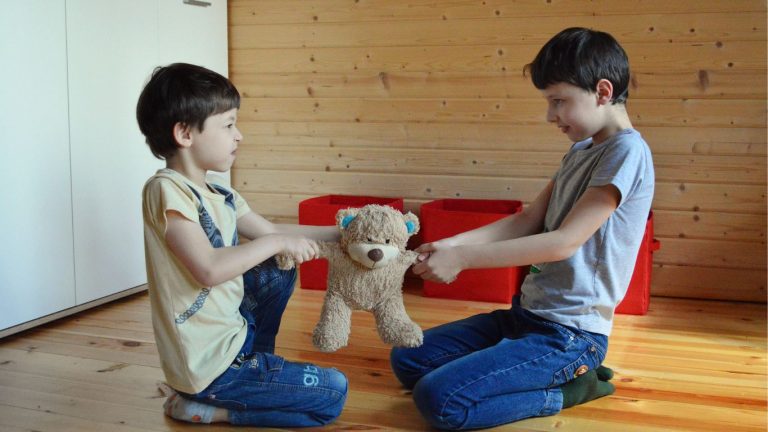One of the most important factors in preventing learning difficulties from developing in children is to ensure that from the moment of birth each child is free when awake to engage their natural-born instinct to move.

Infant movement is crucial to brain development
Babies are born with a cluster of primitive reflexes which are designed to ensure that they survive the first few months of life. For example the sucking reflex ensures that they feed; the asymmetrical tonic neck reflex ( or fencing reflex) ensures that they develop muscle tone on both sides of the body; and the spinal gallant reflex ensures that they wiggle when lying on their back so that eventually they will roll over with the help of the emerging rolling reflexes.
Learning to move
Once on their tummy, the opportunity arises for them to eventually explore the wonderful world around them, first by creeping along like lizards, then rising on all fours to rock back and forwards, before eventually crawling on hands and knees. All of these movements, which healthy babies will do instinctively when placed on the floor in this first year of life, mature the brain and lay down the pathways which will eventually be needed for learning when they reach school at 5 years.
Movement develops spatial orientation
Exploring their world on the floor begins to develop the underlying capacity of spatial orientation which is needed later for learning to recognising and remember the shapes of letters and words (writing and spelling).
Movement is the foundation for good posture and fine motor skills
Crawling on hands and knees is a hugely significant activity which matures the brain of the developing infant. This movement suppresses the primitive asymmetrical tonic neck reflex mentioned above, and enables the infant to move their head freely without needing to also move their hands and feet in the same direction. When it is gone, the child can sit upright at a desk at school with feet on the floor (or at the dinner table) and is able to sit still and concentrate for a reasonable period of time. It also enables the child to develop a good, relaxed pencil grip and write easily without needing huge amount a pressure.
Movement removes the vertical midline barrier
As baby moves his left and his right knee, or his right hand and his left knee forward simultaneously, he is also building pathways across the corpus callosum, the chasm between left and right sides of the brain. These pathways remove the vertical midline barrier, which is there initially to ensure that muscle tone is developed evenly of on both sides of the body.
The ability to move freely in the playground or sporting field later in middle childhood and adulthood is dependent upon this midline barrier being removed. This will enable him to easily move his arm or leg across his body to hit that tennis ball or kick that rugby ball without loss of balance or coordination.
Movement develops visual skills needed for learning
For example the rocking movement performed prior to crawling begins to develop the visual skill of accommodation – the ability to change focus quickly from far to near. The baby looks up and focuses across the room, (or later on the board at school) and then looks down to focus quickly on the floor (or later on the book on their desk).
As the child crawls forward he looks back and forth at his own hands as they appear on the floor in front of him. While doing this, he is developing visual tracking, an important skill needed to read and write smoothly across the middle of the page or reading and writing. If the vertical midline barrier remains, the school-aged child’s eyes will often jump backwards, or skip letters or words in the middle of the page, or stray to the line above or below, interrupting the flow of reading.
Sufficient movement in the first year of life can prevent the development of inconsistent learning in the classroom.
All of the primitive reflexes are controlled by the part of the brain concerned with survival and they are there to ensure that the child gets moving and upright somewhere around the 12 month mark. When they are triggered, they interrupt the ability to think and remember what the child has just learned. While they are essential in the first year of life, if they remain beyond this into the school years, they cause can distractibility, restlessness, hyperactivity, loss of concentration and inconsistent learning. The child may learn and understand a new concept one day but it is gone the next, all because a primitive reflexes may have just been triggered. The new learning does not have the chance to enter into the child’s long term memory because of these interruptions to the cognitive process.
Move to learn
Modern children are far more sedentary than their parents’ and grandparents’ generations and this has been a huge contributing factor to the increase in learning difficulties in this generation.
In previous generations, mothers used to stay at home with their babies, and “floor time” took up a considerable portion of every day. Baby was free to enter fully into the struggle to get upright under his own steam, strengthening his muscles, removing primitive reflexes and eroding the vertical midline barrier as nature intended.
The need for many parents to return to work while their children still are very small has meant that instead of spending most of their waking hours on the floor engaging in all of these early childhood movement patterns, babies now spend a significant amount of time restrained in car seats, high chairs, infant seats, jolly jumpers, bouncinettes and walkers.
By doing this often, parents unwittingly deprive their children of the opportunity to forge the pathways needed for learning to be easeful when they reach school.
This creates quite a dilemma for the working parent, but there are solutions to ensued that your baby does get sufficient time on the floor.
Here are some suggestions:
- When at home give your baby every opportunity to move on the floor every day, especially on their tummy.
- Avoid the use of bouncinettes, jolly jumpers etc. Use only occasionally when safety is an issue. Throw away any walker you have away. These are dangerous. Baby should not be upright until he can get there under his own steam, when his bones, muscles and ligaments are strong enough to hold his weight.
- Try and minimise the amount of time your child spends in a car seat. This could include thinking about where you work or take your child to care.
- Chose a day care centre where the caregivers understand the need for babies to move on the floor and have the space and staffing to allow this.
- Ensure that your child’s caregiver does not use the TV or DVDs to manage the children.
- At home turn off the TV and get the whole family moving. Use as an occasional treat only.
By allowing your child to truly learn to move as an infant you are enabling him to mature his brain in the best possible way- under his own steam, the way Mother Nature intended in the first place. He will then be fully prepared when he reaches school to move into learning, as an active, happy, confident and capable participant in his own learning experience.





